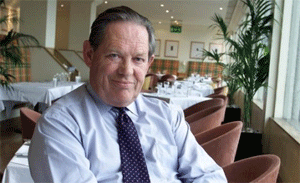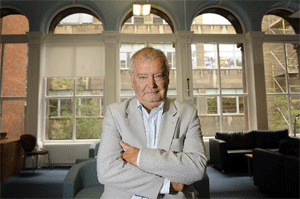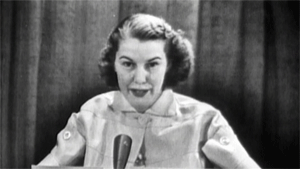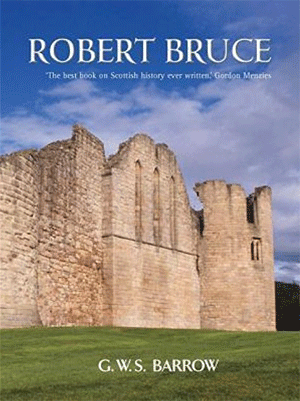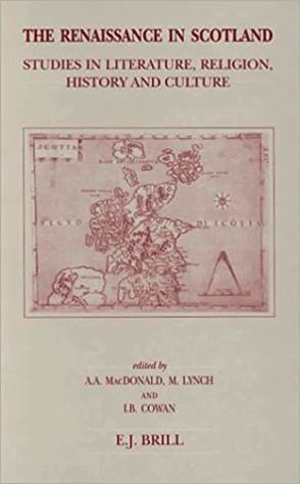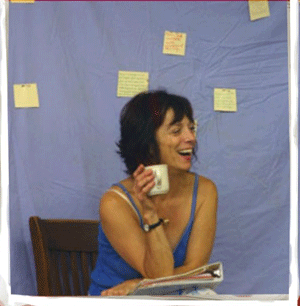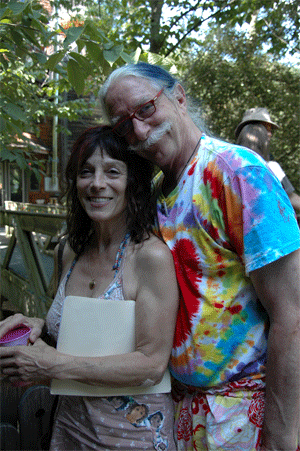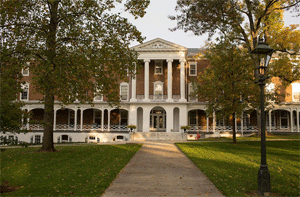Re: Mrs. Kay Griggs on How the Government Works
Dick Davis' Happiest Hurrah
by Tom Sherwood
Washington Post
March 28, 1985
NOTICE: THIS WORK MAY BE PROTECTED BY COPYRIGHT
It is his third time before Virginia voters in five years.
But this time, Richard J. (Dick) Davis is finally running for what he's really wanted all along -- the governor's office.
Davis, a mortgage banker by profession, former mayor of Portsmouth and a former state Democratic Party chairman, won the lieutenant governor's office in 1981 on a ticket led and overshadowed by Gov. Charles S. Robb, the son-in-law of President Johnson. In 1982, Davis was back before the voters in a narrowly unsuccessful campaign for the U.S. Senate against Republican Paul S. Trible.
That campaign was marked by disarray in the Democratic Party and the fact that Davis had made no secret that he really wanted to be governor. He took on the campaign when no other candidate emerged, after initially rejecting the idea.
Now, at 63, Davis is seeking to cap a decade-long political career by winning his party's nomination for governor against state Attorney General Gerald L. Baliles. The hard-fought contest could well be decided during this weekend's crucial mass meetings to select delegates to the party's June 7 nominating convention in Richmond.
"This race is what he is doing on his own," said longtime friend, supporter and former employe Eva S. Teig, the state's commissioner of labor and industry, who said Davis talked about the possibility of running for governor even during his tenure as mayor. "This is his own imprint."
Davis has kept up a steady campaign pace for more than a year, in contrast to what some considered his meager schedule in the Senate race. His statewide push this time was to build his political base and to dilute criticisms from Robb and others, who had said during his 1982 race that he did not have "the fire in the belly" to run for public office.
Robb, despite his public neutrality, is widely perceived as favoring Baliles over Davis. Under Virginia law, Robb cannot succeed himself.
Despite the offices he has held, Davis the man is still not well known to Virginians, his top aides say.
An affable, low-key person in public, he is known to be a bear in private when things don't go his way or an aide fouls up an assignment.
"He's easygoing, he puts a lot of trust in people," says Watson, 29, who first worked for Davis as a teen-age supporter. "His management style is that he delegates authority. If you don't do the job, he certainly will let you know."
When Norfolk's Virginian-Pilot newspaper polled state legislators, politicians and reporters in January, Davis aides said he was privately furious that he was ranked ninth in a field of 22, while Baliles was second.
In public, Davis joked about the poll and said his position was pretty good since his job as lieutenant governor is officially considered part time.
"He has high name recognition," said Robert (Bobby) Watson, Davis' longtime political aide and campaign manager. "But a lot of people don't know the whole Dick Davis story."
That story includes his early years, growing up poor in Portsmouth, where his outlook on life was shaped by scrounging at odd jobs to help his family and a particularly ugly incident when he was 7 and Ku Klux Klan members burned a cross at his front porch because his family was Catholic.
"He was the victim of religious prejudice . . . and it built his character in how he viewed things from then on," said Watson. "He did live in poverty [and] there's no prejudice like poverty. People treat you different."
Davis, a former Marine colonel and University of Virginia law school graduate, is now a millionaire businessman whose ruddy face and often-present pipe is recognized across the state.
He entered politics late, running for the Portsmouth City Council and being elected mayor in 1974 only after a group of local businessmen drafted him to help save the deteriorating Tidewater city.
Although his present job as lieutenant governor is part time and has little legal power, Davis, like other lieutenant governors before him, has parlayed his number two job into a high-profile assignment, serving on a variety of state commissions and panels for Robb that have taken him across the state.
Davis has been a strong supporter of such issues as increased voting rights, the Equal Rights Amendment, the rights of employes and other progressive issues that have helped him draw support from blacks, organized labor and the state's activist teachers association.
It also has made him a ready target for the state's conservative Republican Party leaders, who are salivating at the chance to run against the man they say is more liberal than Baliles. Davis supporters are quick to refute the label in a state where liberal is not considered a helpful political tag, saying his career has been built on concern for social issues combined with "fiscal conservatism."
"I have never really seen a liberal mortgage banker," said 4th District Rep. Norman Sisisky of Petersburg, a personal friend of Davis. "He has a very keen sense of social responsibility. If that's liberalism, so be it."
Davis' "easy manner hides a mind like a steel trap" and belies an ambition seen more easily in others, Teig said.
She noted that Davis is at peace with his world, no matter how the race -- which she expects him to win -- turns out. "He's a successful businessman who has kept the same friends for 30 years," Teig said, a man who enjoys a close relationship with his two teen-age children and his wife, Martha, who is fighting bone cancer.
It is, Teig said, a respect and compassion for people that transcends politics. "He's not a bitter man. He's not bitter about Paul Trible and he won't be bitter if this doesn't work out . . . ," Teig said.
by Tom Sherwood
Washington Post
March 28, 1985
NOTICE: THIS WORK MAY BE PROTECTED BY COPYRIGHT
YOU ARE REQUIRED TO READ THE COPYRIGHT NOTICE AT THIS LINK BEFORE YOU READ THE FOLLOWING WORK, THAT IS AVAILABLE SOLELY FOR PRIVATE STUDY, SCHOLARSHIP OR RESEARCH PURSUANT TO 17 U.S.C. SECTION 107 AND 108. IN THE EVENT THAT THE LIBRARY DETERMINES THAT UNLAWFUL COPYING OF THIS WORK HAS OCCURRED, THE LIBRARY HAS THE RIGHT TO BLOCK THE I.P. ADDRESS AT WHICH THE UNLAWFUL COPYING APPEARED TO HAVE OCCURRED. THANK YOU FOR RESPECTING THE RIGHTS OF COPYRIGHT OWNERS.
It is his third time before Virginia voters in five years.
But this time, Richard J. (Dick) Davis is finally running for what he's really wanted all along -- the governor's office.
Davis, a mortgage banker by profession, former mayor of Portsmouth and a former state Democratic Party chairman, won the lieutenant governor's office in 1981 on a ticket led and overshadowed by Gov. Charles S. Robb, the son-in-law of President Johnson. In 1982, Davis was back before the voters in a narrowly unsuccessful campaign for the U.S. Senate against Republican Paul S. Trible.
That campaign was marked by disarray in the Democratic Party and the fact that Davis had made no secret that he really wanted to be governor. He took on the campaign when no other candidate emerged, after initially rejecting the idea.
Now, at 63, Davis is seeking to cap a decade-long political career by winning his party's nomination for governor against state Attorney General Gerald L. Baliles. The hard-fought contest could well be decided during this weekend's crucial mass meetings to select delegates to the party's June 7 nominating convention in Richmond.
"This race is what he is doing on his own," said longtime friend, supporter and former employe Eva S. Teig, the state's commissioner of labor and industry, who said Davis talked about the possibility of running for governor even during his tenure as mayor. "This is his own imprint."
Davis has kept up a steady campaign pace for more than a year, in contrast to what some considered his meager schedule in the Senate race. His statewide push this time was to build his political base and to dilute criticisms from Robb and others, who had said during his 1982 race that he did not have "the fire in the belly" to run for public office.
Robb, despite his public neutrality, is widely perceived as favoring Baliles over Davis. Under Virginia law, Robb cannot succeed himself.
Despite the offices he has held, Davis the man is still not well known to Virginians, his top aides say.
An affable, low-key person in public, he is known to be a bear in private when things don't go his way or an aide fouls up an assignment.
"He's easygoing, he puts a lot of trust in people," says Watson, 29, who first worked for Davis as a teen-age supporter. "His management style is that he delegates authority. If you don't do the job, he certainly will let you know."
When Norfolk's Virginian-Pilot newspaper polled state legislators, politicians and reporters in January, Davis aides said he was privately furious that he was ranked ninth in a field of 22, while Baliles was second.
In public, Davis joked about the poll and said his position was pretty good since his job as lieutenant governor is officially considered part time.
"He has high name recognition," said Robert (Bobby) Watson, Davis' longtime political aide and campaign manager. "But a lot of people don't know the whole Dick Davis story."
That story includes his early years, growing up poor in Portsmouth, where his outlook on life was shaped by scrounging at odd jobs to help his family and a particularly ugly incident when he was 7 and Ku Klux Klan members burned a cross at his front porch because his family was Catholic.
"He was the victim of religious prejudice . . . and it built his character in how he viewed things from then on," said Watson. "He did live in poverty [and] there's no prejudice like poverty. People treat you different."
Davis, a former Marine colonel and University of Virginia law school graduate, is now a millionaire businessman whose ruddy face and often-present pipe is recognized across the state.
He entered politics late, running for the Portsmouth City Council and being elected mayor in 1974 only after a group of local businessmen drafted him to help save the deteriorating Tidewater city.
Although his present job as lieutenant governor is part time and has little legal power, Davis, like other lieutenant governors before him, has parlayed his number two job into a high-profile assignment, serving on a variety of state commissions and panels for Robb that have taken him across the state.
Davis has been a strong supporter of such issues as increased voting rights, the Equal Rights Amendment, the rights of employes and other progressive issues that have helped him draw support from blacks, organized labor and the state's activist teachers association.
It also has made him a ready target for the state's conservative Republican Party leaders, who are salivating at the chance to run against the man they say is more liberal than Baliles. Davis supporters are quick to refute the label in a state where liberal is not considered a helpful political tag, saying his career has been built on concern for social issues combined with "fiscal conservatism."
"I have never really seen a liberal mortgage banker," said 4th District Rep. Norman Sisisky of Petersburg, a personal friend of Davis. "He has a very keen sense of social responsibility. If that's liberalism, so be it."
Davis' "easy manner hides a mind like a steel trap" and belies an ambition seen more easily in others, Teig said.
She noted that Davis is at peace with his world, no matter how the race -- which she expects him to win -- turns out. "He's a successful businessman who has kept the same friends for 30 years," Teig said, a man who enjoys a close relationship with his two teen-age children and his wife, Martha, who is fighting bone cancer.
It is, Teig said, a respect and compassion for people that transcends politics. "He's not a bitter man. He's not bitter about Paul Trible and he won't be bitter if this doesn't work out . . . ," Teig said.
